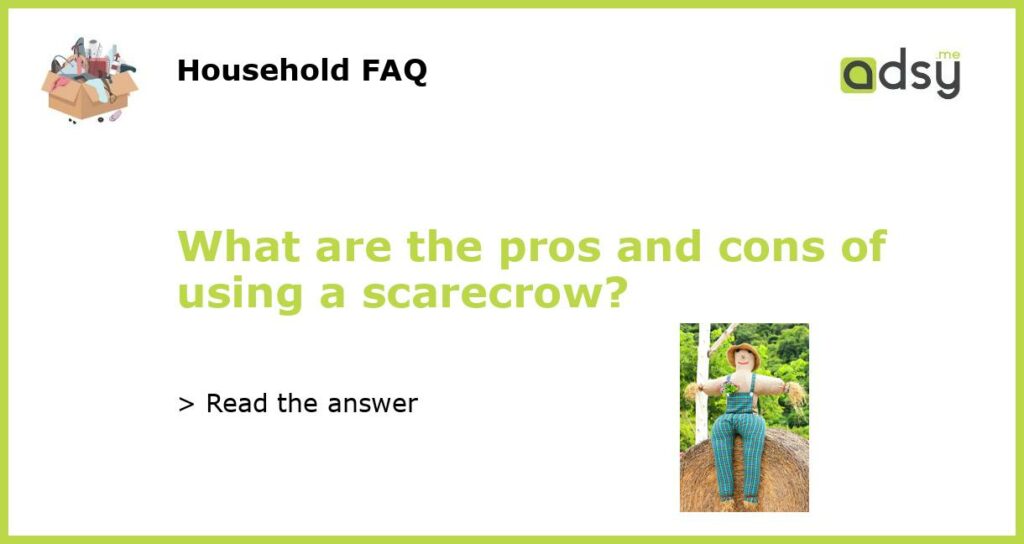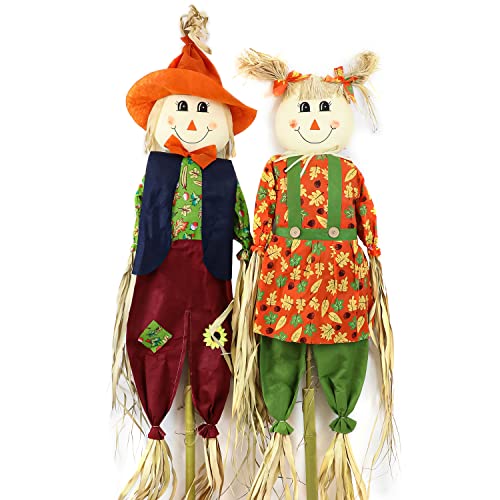Pros and Cons of Using a Scarecrow
Scarecrows have long been used as a traditional method to scare away birds and protect crops. While some farmers swear by their effectiveness, others dismiss them as an old-fashioned and ineffective solution. This article will explore the pros and cons of using a scarecrow in your garden or farm.
Pros of Using a Scarecrow
1. Cost-effective: One of the biggest advantages of using a scarecrow is its affordability. Compared to other bird deterrent methods, such as netting or chemical repellents, scarecrows are relatively low-cost. This makes them an attractive option for small-scale farmers or gardeners.
2. Environmentally friendly: Scarecrows are a natural and eco-friendly method to deter birds. They do not involve the use of harmful chemicals or pesticides, which can have detrimental effects on the environment. By using scarecrows, you can maintain a sustainable and organic farming or gardening practice.
3. Visual deterrent: Scarecrows work by mimicking a human presence in the field or garden. Birds are naturally wary of humans, so the presence of a scarecrow can scare them away. The sight of a scarecrow with its outstretched arms and menacing appearance can effectively deter birds from landing and causing damage to crops.
Cons of Using a Scarecrow
1. Ineffectiveness: While scarecrows have been used for centuries as a bird deterrent, their effectiveness varies. Birds may quickly become accustomed to the presence of a scarecrow, especially if it remains stationary for long periods. This can make the scarecrow less effective over time.
2. Weather dependency: Scarecrows are susceptible to weather conditions. Wind and rain can cause scarecrows to become damaged or dislodged, reducing their effectiveness. Additionally, moisture can make scarecrow clothing or materials rot or mold, decreasing their longevity.
3. Limited range: Scarecrows are only effective within a limited range. Birds may quickly adapt and learn that the scarecrow is not a threat if they realize it does not move or interact. To cover a larger area, multiple scarecrows would be needed, which can be time-consuming and labor-intensive to install.
To Scarecrow or Not to Scarecrow?
Whether or not to use a scarecrow depends on various factors, including the size of your garden or farm, the types of birds you are trying to deter, and your personal preferences. Scarecrows can be an effective and low-cost option for small-scale gardens or farms, especially for those looking to maintain an organic and environmentally friendly approach.
However, for larger areas or if you are dealing with persistent bird problems, you may need to consider other bird control methods in addition to scarecrows. Strategies such as netting, sound devices, or visual deterrents like reflective tape or balloons could be used in conjunction with scarecrows to enhance their effectiveness.
Ultimately, the decision to use a scarecrow should be based on a holistic approach to bird control and should take into account the specific circumstances of your situation. It may be beneficial to consult with local agriculture or gardening experts to determine the most suitable bird deterrent strategy for your needs.
In conclusion, scarecrows offer an affordable and environmentally friendly solution for bird control. While they may not be foolproof, their visual deterrent effect can be valuable in protecting crops or gardens. With proper maintenance and a strategic placement, scarecrows can help keep unwanted birds at bay.






